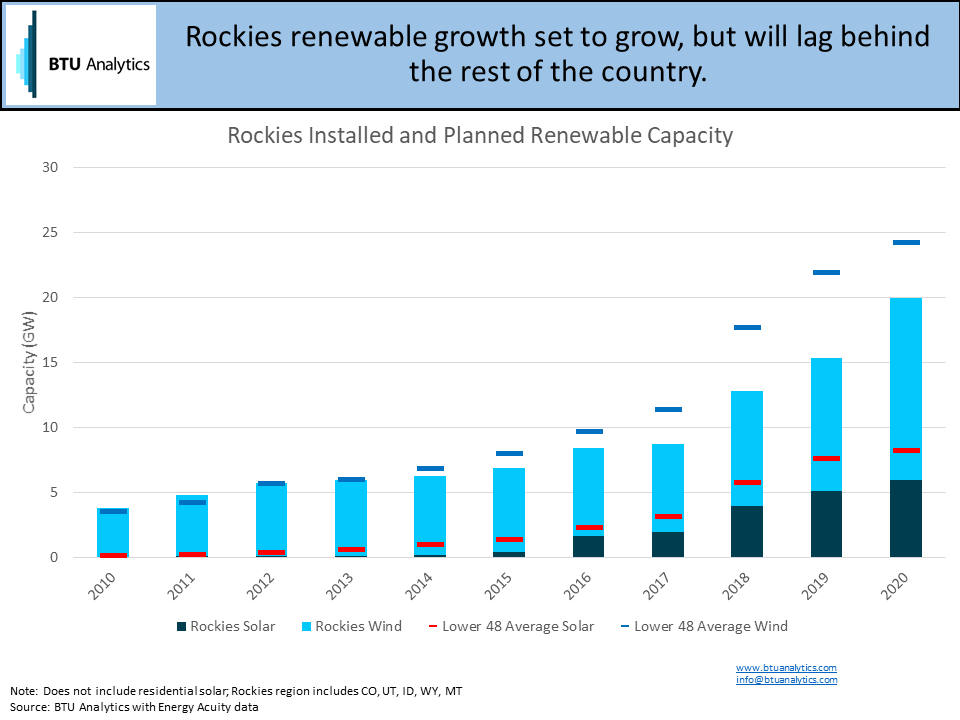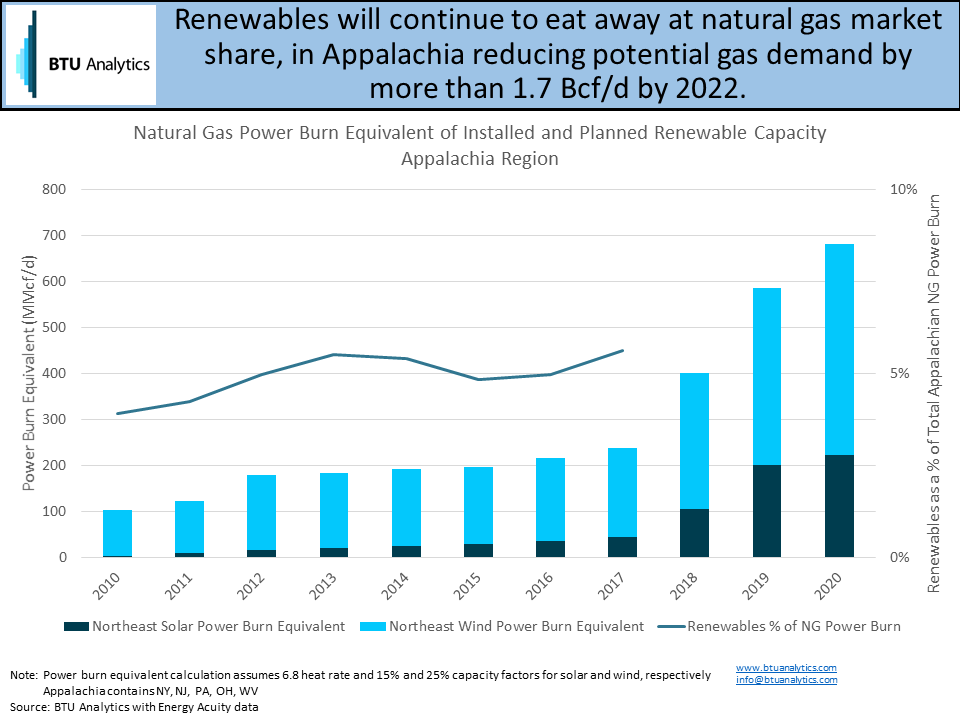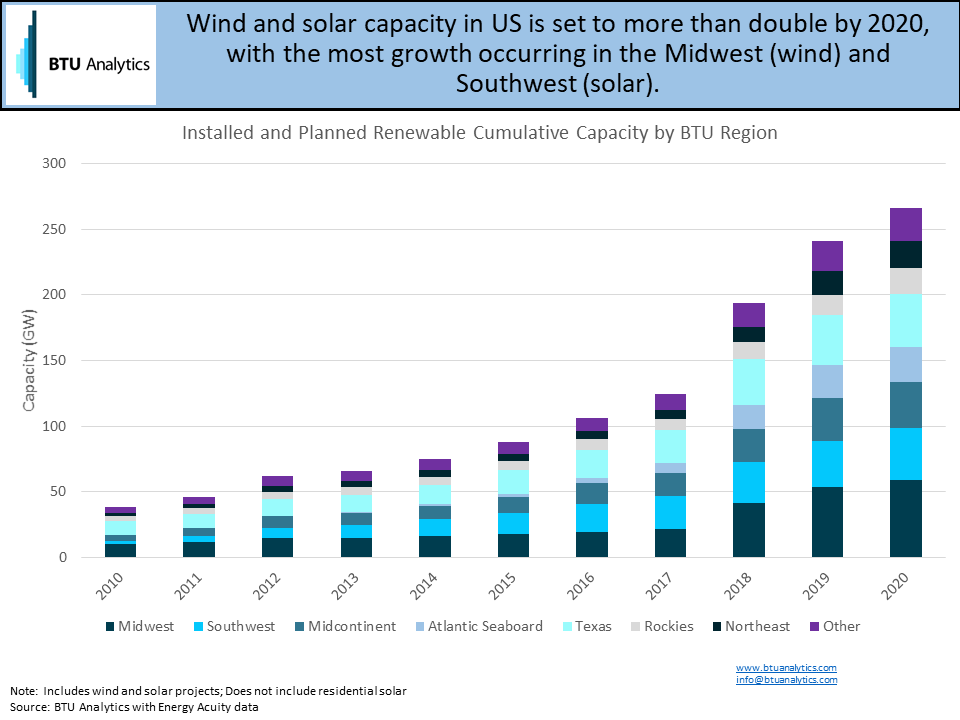The other day, while my wife and I were taking our dog for a walk in Denver, the pervasiveness of solar power hit me. On our short walk, we not only passed three cars belonging to three separate residential solar installation companies but the office of a business specializing in investing directly in renewable projects as well. Previously, BTU Analytics discussed the impacts of Sabal Trail, a new natural gas pipeline in the Southeast, on the Florida natural gas market where solar is continually eating into natural gas’ market share. But what about the rest of the country? How will increasing buildout of renewables impact the US natural gas market?
Starting closer to home, the Rockies, like the rest of the country, has steadily been adding renewable capacity, with solar the late-comer compared to wind power, which has had a foothold in the west for quite some time.

Even with growth expected over the next few years, the Rockies will remain behind the US average for increases in capacity. Let’s move away from the Rockies and turn our attention toward the Northeast, which has been at the center of the natural gas world since the development of the Marcellus and Utica.
As is well known, Appalachia has been and continues to be constrained due to lack of additional natural gas pipeline capacity out of the region. While backhaul projects and new pipes have helped the region to grow over the last five years, regional demand growth has also provided an outlet for incremental production growth. So how much natural gas demand will be stolen by renewables going forward? The graphic below provides an admittedly back of the envelope calculation of power burn equivalent of renewable capacity.

Appalachia is expected to be one of the largest sources of new natural gas fired power demand, with more than 24 GW of new natural gas plants proposed (compared to about 65 GW of currently installed capacity). However, with aggressive renewable portfolio standards in New York and large buildouts of renewable capacity in New Jersey, gas demand growth will face some headwinds.
The Appalachian natural gas market won’t be the only area feeling the pain as new renewable capacity comes online. Renewables are set to eat away at fossil fuel demand all across the US. While California and New York’s renewable portfolio standards grab headlines, perhaps even more damaging to the natural gas market is new renewable capacity being built in growing natural gas demand markets like the Midwest and Atlantic Seaboard (more than 50 GW of new renewable capacity expected through 2020 combined), where new Northeast gas pipelines will finally arrive with Marcellus and Utica molecules.

With all these renewables coming online, will natural gas demand growth be even harder to come by? Will other sources of demand such as LNG and Mexican export demand provide enough support for Henry Hub or will we have perpetually low Henry Hub prices as renewables continue to eat away at gas’ market share? To find out request a free sample of our Henry Hub Outlook report.









